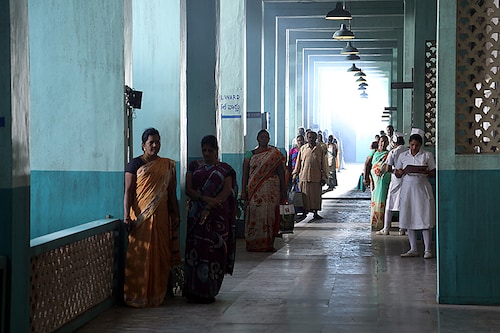The Superbug Scare: Why Indian hospitals need to spur antimicrobial stewardship
Indian hospitals are hotbeds for secondary infections caused by bacteria that are resistant to most existing antibiotics


The world lost 1.2 million people to drug-resistant infections in 2019, more than those lost to HIV or malaria. It is estimated that by 2050, as many as 10 million people could die annually due to drug-resistant infections. It will create a massive economic impact of $100 trillion. This highlights antimicrobial resistance (AMR) as a major public health concern. AMR occurs when bacteria escape antibiotics that are meant to kill them. AMR has been sped up over the last few decades due to the misuse and overuse of antibiotics, giving rise to superbugs—pathogens that are much harder to treat.
Despite the grim AMR scenario, the world’s consumption of antibiotics has been steadily increasing. A Lancet study reported a 46 percent increase in antibiotic consumption since 2000, with low and middle-income countries (LMICs) leading this surge. Increasing antibiotic consumption has resulted in an increasing AMR burden globally, particularly in LMICs where AMR-related deaths are at least four times higher than that in the developed world.
India is one of the largest consumers of antibiotics globally. The widespread use of heavily prescribed antibiotics contributes to increasing microbial resistance. Resistance for most pathogens has been reported to be significantly higher in India, with more than 50 percent of bacteria responsible for life-threatening infections described as drug-resistant. The risk of AMR becomes higher in hospital settings. According to the World Health Organization (WHO), 7 out of 100 patients in a hospital are at risk of developing secondary infections, most of which are caused by drug-resistant organisms. This risk is much higher in LMICs. A recent surveillance study on hospital-acquired infections in Indian ICUs presented a disturbing trend of increased mortality (close to 38 percent) in patients infected with resistant bacteria. Other than adverse health outcomes, such infections also result in increased length of hospital stay and associated costs for patients.
The push for AMS is not without reason, as seen from successful AMS interventions in countries with different health systems. For instance, Sweden—one of the first countries to implement AMS—saw a decrease of 15 percent in total antibiotic use from an already low level, resulting in low bacterial resistance (lowest amongst EU countries), and better health outcomes (declining hospitalisations) for the general public. Similar results have been seen in different countries.
In India, AMS is in a nascent stage. A 2013 survey of AMS practices in twenty major tertiary-care hospitals revealed that only 30 percent of them had any AMS implementation strategies. A follow-up survey in 2015 identified key gaps in the readiness of hospitals to take up AMS practices. From 2018-19, the Indian Council of Medical Research (ICMR) established AMS guidelines and initiated AMS programs at these centres, identifying challenges and enablers to inform future work. This is an encouraging start, however, there is still a long way to go.
While the overall picture looks grim, there are also a few bright spots. Kerala has shown an innovative public-private partnership approach towards tackling AMR. The state has seen a decrease in ‘Watch’ or ‘Reserve’ antibiotics while seeing an improvement in access to first-level recommended antibiotics. A similar trend has been observed in Gujarat, Karnataka, and Tamil Nadu. Other states can benefit from the lessons learnt and develop policies that rationalise antibiotic use.
While system-level changes are happening, a lot more can be achieved at an organisational level if healthcare providers are willing. Imparting education and training to existing staff, appointing AMS champions, making use of technology to support decision-making, and nudging healthcare staff to follow good hygiene practices, are some basic measures that can go a long way in reducing the incidence of resistance. Individuals can also contribute by informing themselves of the dangers of AMR and avoiding antibiotic consumption. At a regional level, these efforts can be further strengthened by developing an AMR policy and treatment guidelines, regulating antibiotic sales while ensuring the availability of recommended antibiotics, using existing laboratory networks for resistance monitoring, and mandating training on AMS for healthcare professionals.
The Indian healthcare system will need all the knowledge and wherewithal to turn the tide on AMR, which, if left unchecked, could become the next public-health crisis with a huge economic cost.
Ashish Sachdeva
Research Director & Adjunct Assistant Professor, Max Institute of Healthcare Management, Indian School of Business
Shivani Tyagi
Consultant, Max Institute of Healthcare Management, Indian School of Business
First Published: Apr 05, 2023, 15:48
Subscribe Now